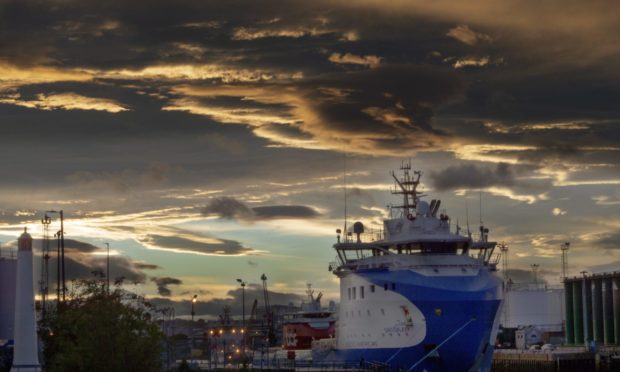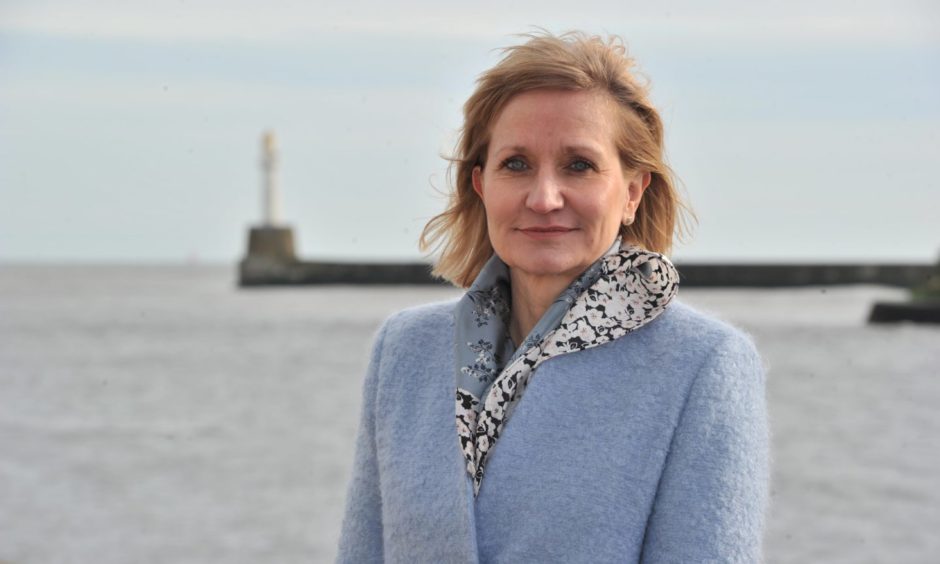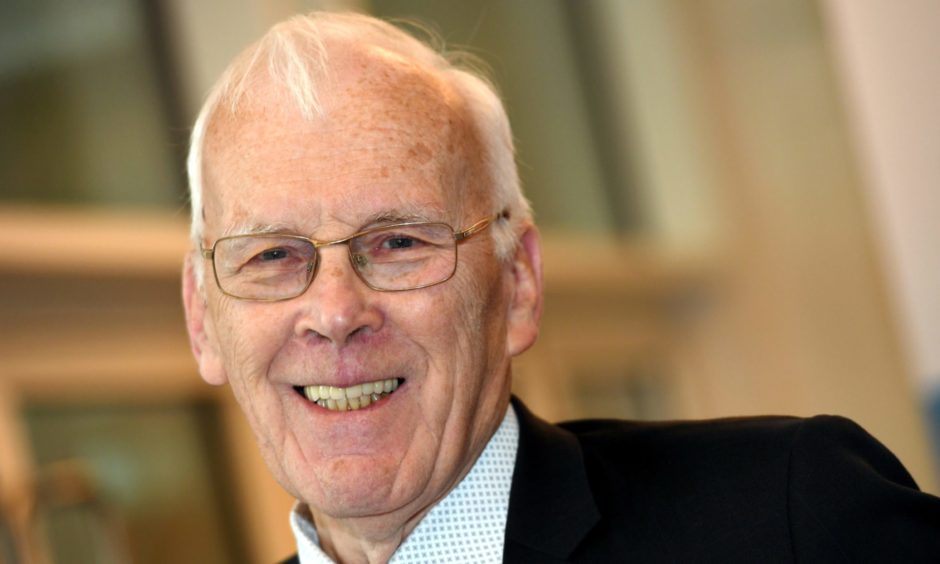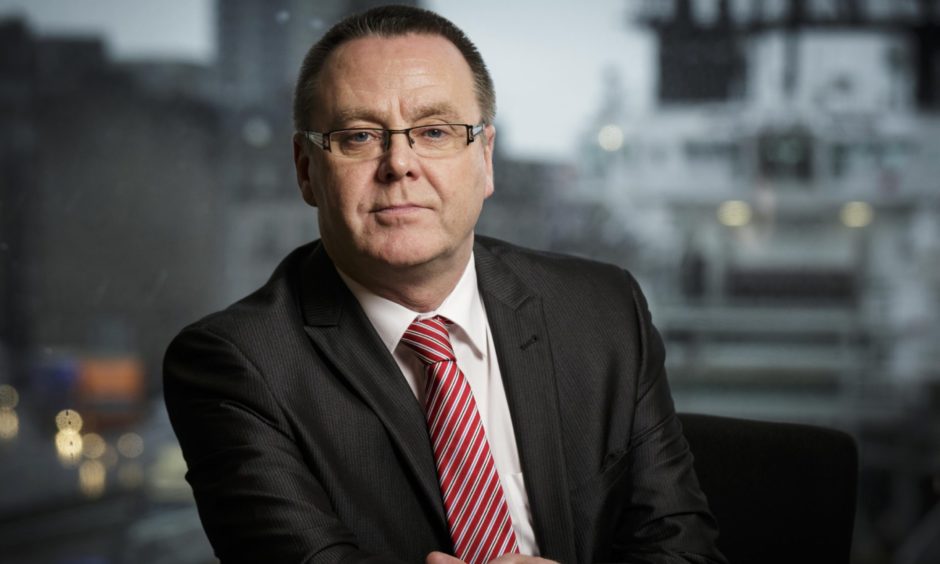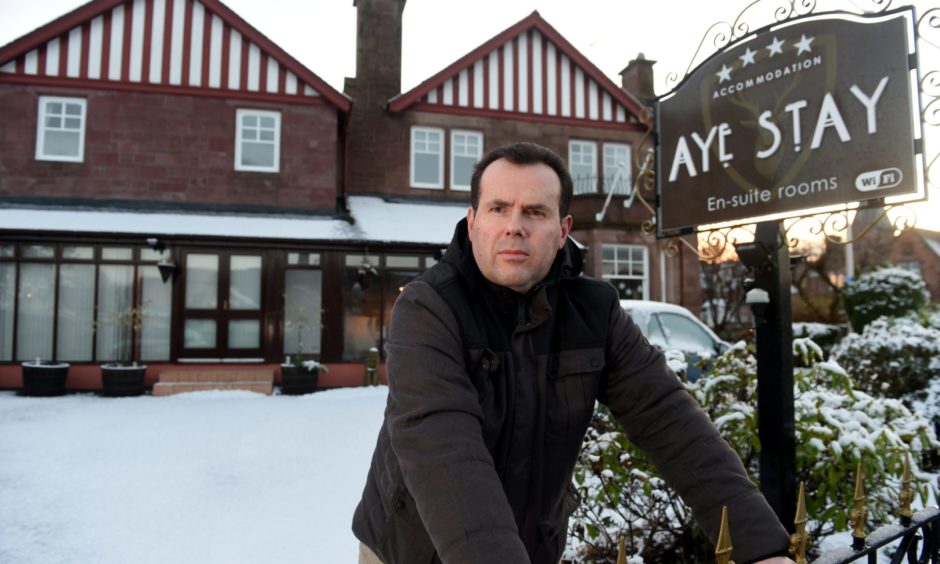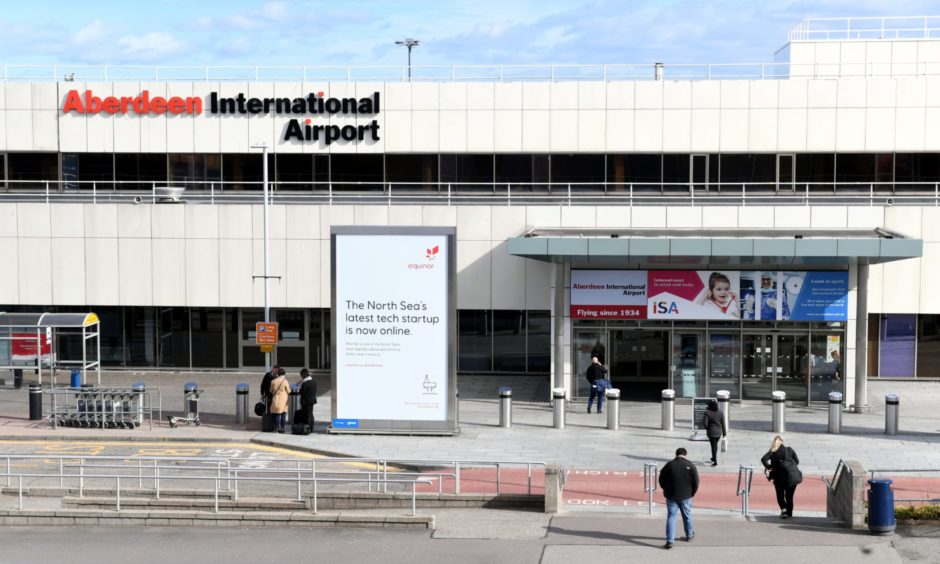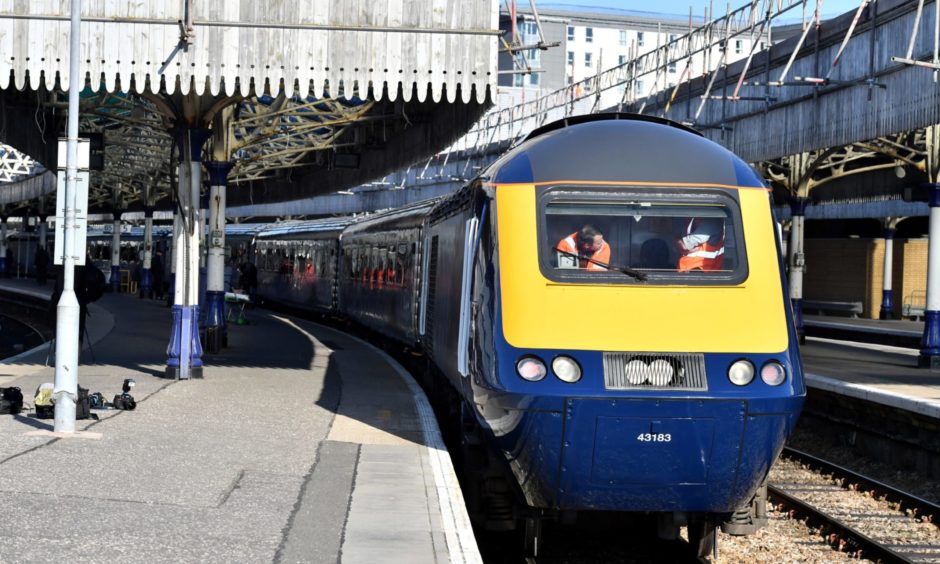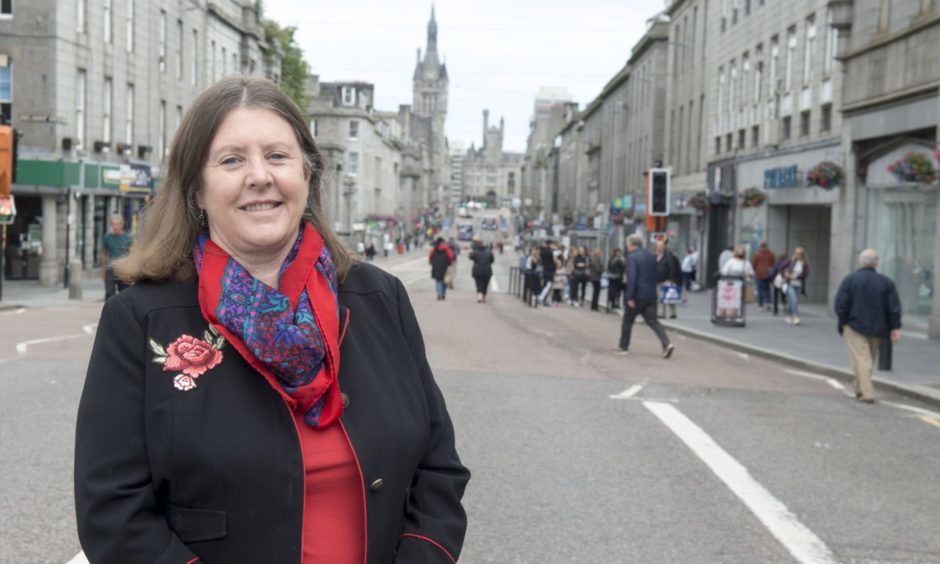For those of us from the Granite City, it is near impossible to imagine an Aberdeen without oil.
Our friends, family, indeed most people you meet, will either have worked in the industry or know someone who does.
It is not just the sector itself that has profited from the money to be made in oil and gas but also the businesses supported by it, from taxi drivers to hotels and restaurants across the city.
Since the 1980s the city’s fortunes have been, to a large extent, dictated by the booms and busts that are such a feature of an industry based around a commodity that fluctuates in price.
With oil fields reaching maturity and against the backdrop of an ever-more serious climate crisis, decision-makers must act fast to safeguard jobs and innovation if they are to avoid the region being “left behind”.
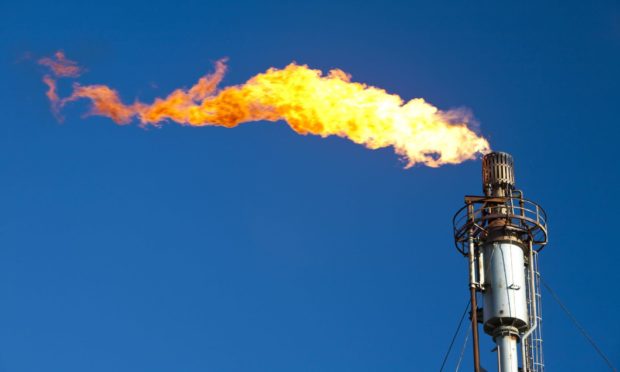
Looking ahead to the Holyrood 2021 election, the energy transition is sure to emerge as one of the most important issues on which voters want to see urgent action.
Further north in the Highlands, the tourism industry is one under threat as a result of the Covid-19 pandemic and those affected have called out for more financial support if they are to survive.
Back to the north-east, connectivity has emerged as another key issue integral to the continued success of the region, if it is to avoid becoming a “northern outpost”.
Energy transition
“It’s tough at the moment,” says Deirdre Michie, chief executive of OGUK, on the future of the oil and gas sector within the north-east.
Ms Michie says the sector, like others at the moment, is under “significant pressure” but is also one that has a “really positive role to play in the energy transition”.
There is two aspects to this, the oil and gas boss claims.
Firstly, the jobs, skills and the experience within the sector needs to be sustained to “keep the oil and gas flowing” and contributing to Scotland’s energy supply to meet the demand that will still be there.
At the same time, the skills and experience of the industry will be “absolutely key” to the energy transition in terms of what will be required in that context.
Ms Michie says: “This sector and the skills you see in Aberdeen and the supply chain will be key to helping that successful delivery of the challenging targets that are being set by the Scottish Government.”
This transition must move “at pace” although the oil and gas industry boss says efforts are ongoing to deliver a North Sea Transition Deal with the UK Government.
As well as that, Opportunity North East is developing plans for a new multi-million pound clean energy park in Aberdeen, with two locations in the city identified as potential sites.
“The North Sea Transition Deal will be about helping communities around the UK shift their emphasis, not leave oil and gas, but shift the emphasis to incorporate the energy transition”, Ms Michie says.
“In Aberdeen specifically, you’ve got the work that is being done on the ETZ which is all about making the north-east an area where you have companies coming into invest who are focused on the energy transition.
“I think there is a lot of good work happening and there is a lot of commitment. Pace is absolutely right and we have to get after it, I would agree with that.”
The OGUK boss believes the “ongoing support” of the Scottish Government and political parties will be “crucial” along with recognition that the sector is key to the ongoing security of the UK’s energy supply, its impact on Scottish GDP and the money the supply chain brings.
If government and parties have confidence in the sector and believe it has a role to play in the energy transition that will be “incredibly important” in encouraging companies to come forward and invest in new cleaner forms of energy, Ms Michie adds.
Veteran north-east entrepreneur and Opportunity North East (ONE) chairman Sir Ian Wood says there is “no doubt” the north-east is “uniquely positioned” to take advantage of the “massive opportunity” the energy transition offers.
With the support of government, ONE is confident the new energy transition zone would lead to “transformational growth” and the organisation will continue to make the case to all political parties to support its aims.
“ONE and its partners have a clear ambition to transform Aberdeen and the north-east of Scotland into a globally integrated energy cluster, focused on accelerating to net zero through developing energy transition activities”, Sir Ian says.
“This includes the Energy Transition Zone and the Aberdeen Hydrogen Hub which are key milestone projects.
“There is no doubt that the North East is uniquely positioned within Scotland and the UK to take advantage of this massive opportunity.
“After 50 years of North Sea oil, the region has the infrastructure, business capability and world-class talent pool to create significant investment and employment opportunities.”
However, Jake Molloy, RMT regional organiser, says the city’s status as a hub for innovation is at risk of disappearing unless governments take prompt action to shift to cleaner forms of energy production.
The Aberdeen-based trade union boss points to other European countries, such as Denmark and Norway, who are leading the way through subsidising the development of the technology, with the north-east being “left behind”.
Mr Molloy claims governments are “just letting it happen” and that the region, despite the expertise of its workface, faces a “wasted windfall” unless investment is forthcoming.
He says: “I think we’re being left behind to some extent if you look at what’s happening in Denmark and Norway.
“The fact that Equinor, a state owned Norwegian oil company is building the biggest wind farm in the world off the east coast of the UK speaks volumes about what the state of Norway is doing to protect pensions and its welfare and state funding.
“We on the other hand are just letting it happen, it’s passing us by, just what happened with oil and gas; a wasted windfall.
“We can’t afford to let that happen again.”
The region’s reliance on oil and gas has to shift in the context of its “very mature basin” but also due to very obvious climate change concerns, the union boss adds.
He says: “Most of the decommissioning happening in the UK is going to Norway, most of the turbines and most of the blades for the offshore wind sector are being built in Denmark and Germany, the bulk of the structural work is being done in the middle east or the far east.
“This is a nation that built the installations producing oil and gas, we’ve got a track record of pretty good engineering standards but we’re not prepared to exploit those standards in any shape or form.
I think we’re being left behind to some extent if you look at what’s happening in Denmark and Norway.”
Jake Molloy, RMT union
“We want to do it quick and we want to do it on the cheap so we’re sending it to the far east.
“That’s a recipe for economic disaster and Aberdeen is the front runner.”
Energy policy is largely reserved to Westminster but Mr Molloy says whoever enters the Scottish Parliament after May’s elections should call for faster action on the energy transition and be “banging that drum loudly”.
We’re waiting and hoping that somebody with a big wad of cash is going to come along and save us all.”
Jake Molloy, RMT union.
Direct government investment is required rather than “sitting waiting for private investment as is the case now, according to Mr Molloy.
He says: “I just don’t understand why any politician can sit idly by and let this happen because it’s their constituents up and down the country, but especially here in the north-east that will suffer as a consequence and will continue to suffer.
“We’re waiting and hoping that somebody with a big wad of cash is going to come along and save us all.”
Tourism
Inverness guest house operator David Shayer says he will likely have to “write this year off” as a result of a drop in custom due to the Covid-19 pandemic.
Mr Shayer, who runs Aye Stay, a 10-room guest house on the city’s Bishops Road, does not even think he will be in a position to open in 2021 as he claims there will be “no market”.
It is a sentiment shared by many across the Highlands and Islands, a region which in 2018 welcomed more than 14 million day visitors and 2.6m overnight guests, generating £1.5 billion for the economy on average each year.
But it is a sector which has been ravaged by Covid-19 with restrictions on travel imposed across the UK and an almost non-existent international market.
Looking ahead to the Holyrood elections, those in the industry want to see increased government support, and a number of other measures, if they are to survive.
Mr Shayer criticises the Scottish Government for “rushing through legislation” to introduce new short-term let regulations.
The licensing scheme, due to be passed in April, would see self-catering and B&B operators having to apply for a licence from their local authority.
Guest houses would be exempt from the regulations but Mr Shayer says it is the “last thing” the industry needs as it emerges from the Covid-19 pandemic.
He would also like to see more financial support as all he has had is a £10,000 grant to last the year, with businesses only surviving because they are taking out “massive loans”.
The guest house owner would also like the Scottish Government to assist on promoting the region as a holiday destination for the winter season.
He says: “We’ve only got a short season in the Highlands from April to October.
“If the Scottish Government could help in promoting the Highlands for a longer season and the benefits of Scotland for the winter with the skiing and if they want to come and see the snow in the hills.
“I think that would help for people to get some money through the winter.”
Daniel Mackenzie-Winters, chair of the Inverness and District B&B Association, says bed and breakfasts have been “very hard hit” by Covid-19 and because many pay council tax, rather than business rates, the funding opportunities available to them from the Scottish Government have been “limited”.
He is also critical of the move to introduce new short-term let regulations, which he says have come at “completely the wrong time” and could end up “forcing small operators out of business”.
However, the Scottish Government says existing operators will have until April 1 2023 to apply for a licence under the new legislation, adding that it will “level the playing field between B&Bs and properties listed on platforms such as Airbnb”.
Mr Mackenzie-Winters also urges the government not to revive plans for a so-called tourist tax, which has previously attracted support from both Highland and Aberdeen City Council.
Highland councillors agreed in October to press the Scottish Government to include legislation for a tourist tax in future programmes.
Proposals were paused due to the pandemic and have not been included in the current programme for government.
He would also like to see more government investment to councils so that local infrastructure such as roads and toilets can be improved, which can have a “huge impact on visitor experience”.
The B&B association chairman adds: “Highland Council were very keen on introducing this tax before the pandemic started but we need to encourage tourism over the coming years and we don’t want to add such a tax to our accommodation charges.”
Regional connectivity
Improving connectivity to the north-east is an issue long championed by businesses and politicians eager to boost the economy of the region.
Aberdeen and Grampian Chamber of Commerce, which has a membership of more than 1,100 businesses, say it is vital the region does “not become just a distant northern outpost” if it is to recover post Covid-19.
A recent letter penned by the business organisation says Covid-19 has created a “hugely uncertain environment” for the transport sector.
More than any other region of the UK, Aberdeen is dependent on air connectivity due to the volume of people travelling for oil-related business.
Indeed, around 1,000 hotel bedrooms in the city have been lost to closure due to the dependence on business tourism.
Shane Taylor, policy and research manager at the Chamber, says that in addition to holding in place the rates relief package for airports, governments must consider the suspension of Air Passenger Duty for an “extended period”.
“When we look at the sector itself, I think it’s very clear that the aviation sector has been particularly challenged through this”, says Mr Taylor.
“In Scotland we have had some benefit in getting airport rates relief and that has transitioned across the border.”
Aberdeen Airport bosses have been vocal in calling for a change in the current tax system to make it a level playing field.
Currently, passengers flying from Inverness are exempt from paying APD, meaning airlines are able to sell cheaper flights without profits being hit.
Meanwhile, those travelling from Aberdeen must pay the duty when they book their flights.
Highlands and Islands Airport is exempt from APD to ensure people living in Shetland and Orkney are not unfairly penalised when, for example, attending hospital appointments on the mainland.
The Scottish Government has previously said the existing exemption must remain in place to protect remote and rural communities but airport bosses say their proposals would only refer to flights south of Inverness.
Mr Taylor says the suspension of APD would not only help airports at a disadvantage such as Aberdeen but that this should be linked to the investment the industry requires to decarbonise, through means such as planes becoming more fuel efficient and using more sustainable biofuels.
A spokesman for Aberdeen International Airport describes the success of the airport and the region as “intertwined”, adding that the city’s internationally-focused economy is “dependent” on connectivity.
The airport adds that aviation is “central” to any UK economic recovery post-Covid-19 and says the government must “actively support” to link all regions of the UK domestically and internationally to increase trade.
The spokesman continues: “We continue to call on sector specific support and the introduction of a Regional Connectivity Fund and the abolishment of Air Passenger Duty are two levers government could pull to help aid our sector’s and the economy’s recovery.”
Chamber bosses and political leaders in the city have consistently pushed for progress on £200m plans to cut train journey times between Aberdeen and the central belt by up to 24 minutes.
A report released last year said the next stage of plans for the project could be accelerated.
The funding has been in place since 2016 but construction works have yet to begin.
Sandra Macdonald, chair of regional transport partnership Nestrans, says all parties involved now have a programme which will achieve a reduction in journey times and that the timescale for the project being delivered remains 2026 under the 10-year terms of the deal.
Mrs Macdonald, who is also an Aberdeen councillor, therefore expects work to start “fairly soon” if those timescales are to be met.
She says although this project will help deliver improved journey times between the north-east and the central belt funding “far in excess of £200m” would also need to be forthcoming in order to address a “pinch point” at the Montrose basin where there is only single track rather than double.
Mr Taylor agrees that improving rail times is a “really key initiative” for the region as the lack of connectivity betwen the two is “constraining economic growth”.
He adds the the need for action is ever more pressing as a result of the HS2 project, the high-speed rail link connecting London to Birmingham, Manchester and Leeds, which will create an “economic disadvantage” for Aberdeen which as a city region will not directly benefit.
“As far as I understand there is a plan to take it forward and progress it but we need to see that being put out in a concrete way so the region itself can look to that and see that process is finally beginning to progress”, Mr Taylor adds.
“It’s due to complete round about the same time as the other work in the city region deal portfolio.
“This funding was slightly separate to the city region deal but was announced alongside it, by 2026.
“As with all infrastructure projects, they take time, so to meet those timelines we really need to start soon.”
